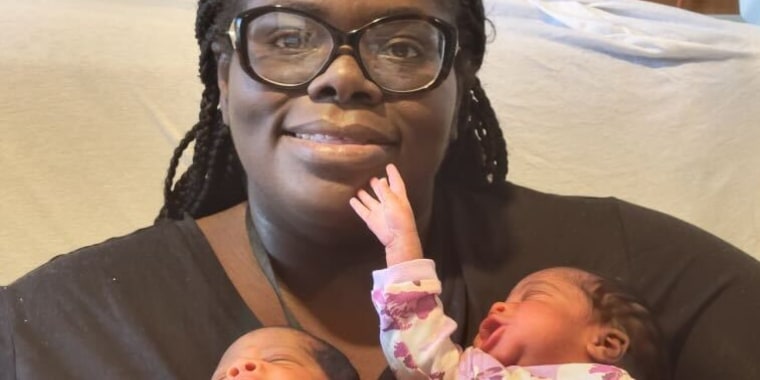Doctors put the odds of having three sets of spontaneous twins at about 1 in 200,000 — which makes Kimberly Alarcon very special.
Alarcon, 37, welcomed her third set of fraternal twins on Monday at Westchester Medical Center. Sisters Kenzy and Kenzley joined Brittney, 17, Sarah, 13, Hunter, 10, Zachary, 6, Zoey, 6, Olivia, 4, Oliver, 4, and King, 3.
Alarcon and her babies are set to be discharged Thursday.
Yes, their life is hectic, but the Alarcons wouldn’t have it any other way.
“Our home is full of love,” Alarcon told TODAY Parents. “We have good days, we have bad days, just like any other family. We just take it one day at a time.”
Alarcon grew up with 18 siblings. Her mom had 10 biological children and then adopted 8 more.
“Having a packed house is normal for me,” Alarcon’s explained. “Not only were there 18 of us, but then we also had our friends coming over. Sometimes we had 30 kids over at once.”
Alarcon said her husband, John, a detective, was raised with just one brother and always yearned for a big family.
“It’s a handful, but we are grateful,” she gushed. She joked that John would be happy to keep having more and more.
Factors that increase the chance of conceiving twins without fertility drugs include being over the age of 35, higher BMI, and having a history of twins on the mother’s side.
“But three sets of twins back-to-back without medication or any intervention is highly unusual,” Dr. Angela Silber, chief of maternal fetal medicine at Westchester Medical Center, told TODAY. “It’s pretty incredible.”
In Igbo-Ora, Nigeria, about 50 in a thousand are twin births, according to Dr. Michael Cackovic, an associate professor of maternal fetal medicine at The Ohio State University.
“Their makeup is that they super ovulate,” Cackovic previously told TODAY. “They ovulate more than one egg.”
Related:
